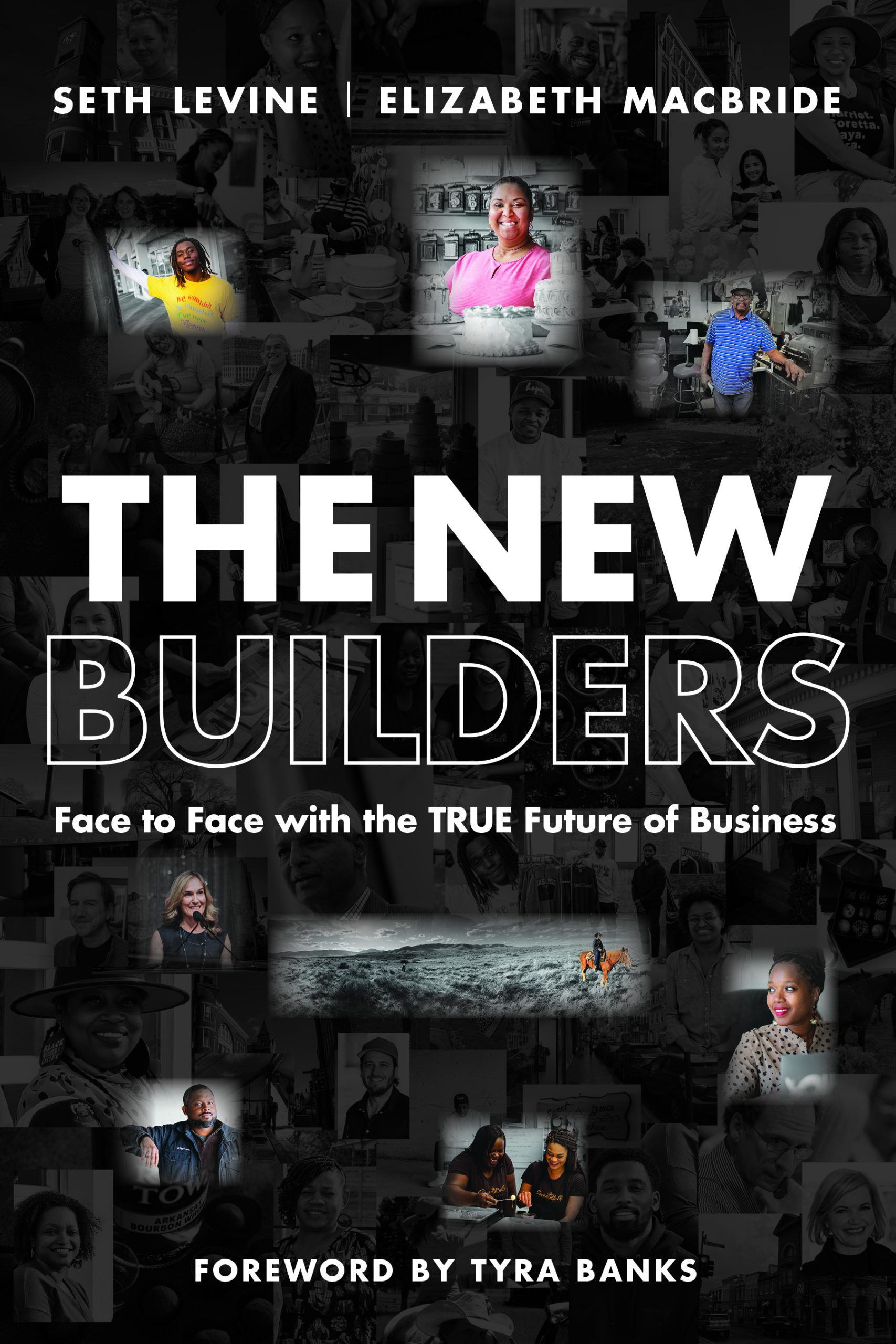More New Builders Events! Tattered Cover Bookstore (and more!)
A few upcoming events to let you know about. First, we’re taking over the Instagram account for Commonplace Books in Oklahoma City for the entire day today (4/27/21, but the archive will remain there if you’re reading this later). We’ll be live on the account to answer questions about The New Builders and to talk with readers at both 1:00PM and 4:00PM MDT (that’s 2:00PM and 5:00PM in OKC). We’ll be telling the stories and introducing some of the entrepreneurs working in Oklahoma City that we write about in the book. Drop in and join us!
Also, a reminder that tomorrow night, we’re hosting an event with Black Lab Sports that will focus on New Builders working in sports and performance technology. I was just reviewing our plan for the evening – it will be a very interesting discussion. More details through the link above.
Last event to tell you about is one that’s close to home for us – a forum we’re hosting along with the Tattered Cover Bookstore. I’ve been visiting the Tattered Cover since I was a kid, coming to Denver to visit my grandparents each summer. Tattered is an icon of Denver and a wonderful local resource for our community (as so many local bookstores are). I was fortunate to be able to participate in the purchase of Tattered that was led by new CEO Kwame Spearman a few months ago.
 Next Friday, May 7th, Tattered will be hosting an online discussion about The New Builders at 6pm MTN. The event will be moderated by Summer Nettles of Greater Purpose Media and will feature some New Builders from the Denver area: Lorena Cantarovici of Maria Empanada, Toti Cavadid of Essencialize, and Mowa Haile of Sky Blue Builders. Maria’s shop was recently visited by Vice President Biden.
Next Friday, May 7th, Tattered will be hosting an online discussion about The New Builders at 6pm MTN. The event will be moderated by Summer Nettles of Greater Purpose Media and will feature some New Builders from the Denver area: Lorena Cantarovici of Maria Empanada, Toti Cavadid of Essencialize, and Mowa Haile of Sky Blue Builders. Maria’s shop was recently visited by Vice President Biden.
The event is mostly focused on this amazing group of business owners as we talk about women and BIPOC business owners and how to better support them. My co-author, Elizabeth, and I will talk briefly at the end about how the themes these entrepreneurs talk about are reflected nationally.
You can register for the event via Eventbrite. We hope you’ll share this with others – it’s going to be a special evening (and those from anywhere in the country – or the world – are welcome to join!)
New Builders | Black Lab Sports Forum
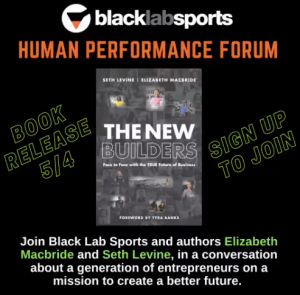
Black Lab Sports is hosting a great event on Wednesday, April 28 from 6pm – 8pm that will focus on the intersection of themes from our upcoming book (The New Builders) and diverse founders working in sports and performance technology. The event will be hosted by Black Lab Sports CEO JP O’Brian and Cody Burkhart of NASA and, along with my co-author Elizabeth MacBride and me, will feature some amazing guests working at the forefront of human performance:
Dhani Jones, former NFL linebacker for the Giants, Eagles, and Bengals. After football, Dhani turned his attention to entrepreneurship, philanthropy, and activism as well as hosting the Travel Channel’s Dhani Tackles the Globe, VH1’s Ton of Cash, and CNBC’s Adventure Capitalists.
Marques Anderson, former NFL safety who played for the Packers, Raiders, Broncos, and the 49ers. Marques then went on to found the World Education Foundation and to become Head Coach for the Norwegian American football organization, Oslo Vikings.
Krissa Watry, Founder and CEO of Dynepic and Dynepic Sports. Before becoming an entrepreneur, Krissa was in the USAF and worked at Andrews Space. She also sat on the boards of Marshall Communications and Mission Solutions Group.
We’re incredibly excited to bring this amazing group of entrepreneurs together to talk about their experiences as New Builders and the future of entrepreneurship. It’s going to be an eye-opening discussion with an innovative group working at the leading edge of human potential. This is an online, free event and we’d love to have you join us (Eventbrite registration link). And please share with your networks as well!
Bolster’s Board Benchmark Study | Shout-out to Execs Looking for Independent Director Roles
As we’ve recognized the need to diversify our networks to better diversify our companies and company boards, Foundry has been working with a number of firms such as HimforHer, Valence, ReadySet, and others. We’re also partnering with Bolster – a company that, although we’re not direct investors, we have strong ties to through several of our partner funds who are investors as well as through our long, long time relationships with Bolster’s CEO, Matt Blumberg (who was CEO of Return Path in the Foundry portfolio) and Micah Mador (former Foundry Network and Community Catalyst and now Partnerships Manager at Bolster).
Today, Bolster released their Board Benchmarking survey analyzing the diversity, composition, and compensation of 250 private company boards (including over 50 Foundry portfolio companies who participated) and 650+ individual board members. The data show just how much work we still have to do in diversifying our boards. Overall, the data showed that 85% of directors on Foundry portfolio company boards are white but that 57% of our companies currently have open board seats. This presents a great opportunity to build more diversity at the board level. Since Foundry’s network spans 38 partner funds and over 1,500 companies, if half of those companies also have open board roles, our slice of the universe has more than 750 potential open board seats.
Foundry is committed to positive change on a bigger scale and this means diversifying our networks as a collective. To help us do this, we’re partnering with Bolster to invite each Foundry Partner Fund and their portfolio companies into a new type of talent network: The Foundry Collective.
We also recognize that there is inherent bias in the networks of our own company leaders and fund managers. So we’ve also decided to open source this initiative and surface Foundry Partner Fund board opportunities to the broader tech ecosystem, with a particular eye toward boosting access to individuals traditionally under-represented on boards. If you are an executive interested in independent board roles or know someone who would make a fantastic independent board member, fill out a member profile on Bolster using this link. In addition to board opportunities across the Foundry Network, a Bolster member profile will also unlock access to their broader ecosystem of hundreds of startup and scaleup CEOs, as well as content and resources to help you on your journey to the boardroom.
The data show that diverse companies perform better, and through our collective efforts, we can do our part to influence the way board rooms look in 2021 and beyond. This, of course, is in addition to the initiatives we have in place to continue to diversify the executive ranks (and overall ranks) of the businesses we’ve invested in.
You can read Bolster’s full report here and see some highlights below.
Key findings:
-
- Only 32% of private company boards have independent directors. Half of boards have open independent director seats they expect to fill in the next 12 months.
- Compared with investor or management directors, independent director seats are 3 times as likely to be held by women. 86% of director seats overall are held by men, and 56% of early stage private company boards have no gender diversity at all.
- Four out of five seats on private company boards are held by individuals who are white, and 43% of boards are completely homogenous with regard to the race/ethnicity of their directors.
- CEOs are broadening their searches to diversify their boards. Two-thirds of CEOs are open to bringing on first-time directors, and 41% of independent directors have either some college or an under-graduate degree only.
- Board composition tends to over-index on investors and management directors. 59% of boards have more than one management or founder director and 59% of boards have 2 or more investor directors.
- Men seem to have a slightly higher average earning potential (measured in basis points per year and grant value) compared to women directors at like companies.
Behind the Scenes: Writing “The New Builders”
Many readers likely already know that I’ve been working on a book for the last several years – The New Builders: Face to Face with the True Future of Business. It’s due out in a few weeks and I’m really excited about it. W riting a book was challenging but in many ways, it was an unexpected pleasure. I thought it would be fun (and interesting) to post about the process a bit. Especially as we’re about 10 days away from its release on May 4th.
riting a book was challenging but in many ways, it was an unexpected pleasure. I thought it would be fun (and interesting) to post about the process a bit. Especially as we’re about 10 days away from its release on May 4th.
I have long been interested in looking at ways that we can support diverse entrepreneurs and connected with my co-author and friend, Elizabeth MacBride, around this topic some years ago. Main Street businesses – the ones that truly hold the fabric of their communities together – rarely make news headlines. But they are incredibly important to our economy and to their communities. We both believed this passionately but wanted to uncover the stories and data behind those main street entrepreneurs. That led on a roughly year-long journey of researching and interviewing entrepreneurs throughout the country to find out their stories, where their struggles stemmed from, and what they needed to thrive. We had a chance to talk to a number of people supporting these entrepreneurs as well as researchers working on understanding the details and key trends in these industries. It was a whirlwind of information (and became quite a compilation of notes, documents, and research reports in an increasingly large Google Drive).
From there came the actual writing. Setting a goal of 5,000 words per week, I blocked off parts of 2 days in my calendar, all summer, to write. Some days, the words just flowed, while on others, I needed to muscle through. Interestingly, I could never tell when sitting down to write which kind of day it was going to be. Often it took me an hour or more to get into the writing flow and to determine which kind of day it was goin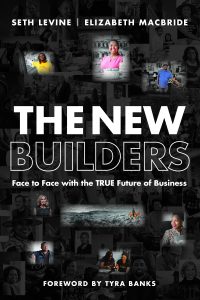 g to be (flowy and quick or a slog). Through this process, I found that I’m a pretty linear writer – I start in one place and keep going; typically writing a chapter in its final order. I loved writing with a partner and the contrast in styles was a particularly interesting facet of our collaboration. While my style was a little dry and very much writing in a straight line, Elizabeth wrote more in concentric circles. She not only taught me how to weave stories in and out of chapters, she wrote almost as if she was painting, laying down the foundation across a chapter she was working on, then layering in some of the key features, and finally coming back to fill in the details. Those chapters almost emerged from the mist, often coming to full form in a way that was somewhat surprising (I would be thinking we were weeks away from finishing, only to have her do a final pass, add some key details, smooth out the edges, and – voila – it was ready for editing!) I learned a lot through our collaboration. I also really enjoyed the process of editing her work and having her edit mine. I believe it added balance to the final product, even if it was sometimes a little hard to keep to a single voice across the book (typically, we would each be responsible for a full chapter at a time, although there are several that were much more collaborative where we each wrote pieces – I wonder if readers will be able to pick up on which ones those are).
g to be (flowy and quick or a slog). Through this process, I found that I’m a pretty linear writer – I start in one place and keep going; typically writing a chapter in its final order. I loved writing with a partner and the contrast in styles was a particularly interesting facet of our collaboration. While my style was a little dry and very much writing in a straight line, Elizabeth wrote more in concentric circles. She not only taught me how to weave stories in and out of chapters, she wrote almost as if she was painting, laying down the foundation across a chapter she was working on, then layering in some of the key features, and finally coming back to fill in the details. Those chapters almost emerged from the mist, often coming to full form in a way that was somewhat surprising (I would be thinking we were weeks away from finishing, only to have her do a final pass, add some key details, smooth out the edges, and – voila – it was ready for editing!) I learned a lot through our collaboration. I also really enjoyed the process of editing her work and having her edit mine. I believe it added balance to the final product, even if it was sometimes a little hard to keep to a single voice across the book (typically, we would each be responsible for a full chapter at a time, although there are several that were much more collaborative where we each wrote pieces – I wonder if readers will be able to pick up on which ones those are).
Not long after Covid hit, we realized that this was a story that was crucial to tell now. In light of the disproportionate effect the pandemic was having on smaller businesses – particularly ones owned by Black, brown, and female entrepreneurs – we accelerated our writing pace. What started two summers ago as a year of research and potentially 18 months or more of writing, editing, and reviewing turned into a frenetic 6 months of writing, followed by 3 months of development and copy editing. Those later processes were completely new to me and I was thrilled to have our publisher, Wiley, provide not just a copy editor but also someone to read the manuscript for a more thorough development edit first in order to make sure that the key concepts came through in our writing. That process resulted in rearranging some of the chapters and rewriting sections that were either unclear or where our point was lost in the text. At this stage we had a few close friends take a look at the draft as well – which for me included asking my partner, Brad to take a look. Feedback at this stage was extremely helpful. The copy edit process was easier (in part because we had already made heavy use of Grammarly), but laborious.
I was amazed at how quickly things progressed from there (Wiley fast-tracked the book, which made a huge difference). A few weeks after copyediting, we had the final proofs. That was actually the first time I  printed out the book to read cover to cover. There were a surprising number of edits at this stage – some because we had just missed things, but many because it was the first time either Elizabeth or I had taken a step back from the book for more than a few days since we started writing (in this case it had been more than 2 weeks since we had last read any of it). And the nature of drafting a book isn’t a start-to-finish process, so we had often been reading and working on chapters in random order. Now we were reading the entire book from beginning to end, which gave us a different perspective. There were actually 2 rounds of this “final” proof stage before we had it nailed, but I’m glad we took the time to get it right. We also worked on a photo insert section at this stage – something that I hope will set the book apart and give readers a real flavor for the New Builders that we write about (in the fall and early winter, we hired several photographers to go out and take pictures of many of the people we wrote about; not an easy thing to accomplish during Covid, but the results were fantastic – you can see some of their pictures featured on our website already.
printed out the book to read cover to cover. There were a surprising number of edits at this stage – some because we had just missed things, but many because it was the first time either Elizabeth or I had taken a step back from the book for more than a few days since we started writing (in this case it had been more than 2 weeks since we had last read any of it). And the nature of drafting a book isn’t a start-to-finish process, so we had often been reading and working on chapters in random order. Now we were reading the entire book from beginning to end, which gave us a different perspective. There were actually 2 rounds of this “final” proof stage before we had it nailed, but I’m glad we took the time to get it right. We also worked on a photo insert section at this stage – something that I hope will set the book apart and give readers a real flavor for the New Builders that we write about (in the fall and early winter, we hired several photographers to go out and take pictures of many of the people we wrote about; not an easy thing to accomplish during Covid, but the results were fantastic – you can see some of their pictures featured on our website already.
Marketing the book has been an entirely new experience and one we’re just beginning. Emails to friends; requests to blog or write about the book; podcasts galore; some great media hits (including a spot on NPR’s All Things Considered); a few OpEds in the works; events and readings; etc. – all to try to get the word out as much as possible.
The work of The New Builders was born out of a true passion for the importance of recognizing the breadth and depth of entrepreneurship across the US. I’m proud of how it came out.
The Covid Churn You’re Not Thinking About
 Early on in Covid many businesses, of course, worried about the ways that Covid would affect their business. Many made various contingency plans and quite a few adjusted spending (marketing, sales, hiring, etc) in anticipation of Covid’s impact. While in hindsight I think many (in the tech world, I’d probably say most) companies ended up faring better than they expected, some did not and I think even those that ended up being fine were happy that they took the matter seriously and had contingency plans, even if not all of those plans needed to be implemented.
Early on in Covid many businesses, of course, worried about the ways that Covid would affect their business. Many made various contingency plans and quite a few adjusted spending (marketing, sales, hiring, etc) in anticipation of Covid’s impact. While in hindsight I think many (in the tech world, I’d probably say most) companies ended up faring better than they expected, some did not and I think even those that ended up being fine were happy that they took the matter seriously and had contingency plans, even if not all of those plans needed to be implemented.
As we begin to come out of Covid there’s another kind of business impact that I think is important to anticipate and plan for. And it’s not something that many people are yet talking about – post-Covid employee churn. Companies talk about customer churn all the time (it’s the Achilles heel of SaaS businesses, for example, but employee churn is also something to pay close attention to and to plan for.
The Covid era has prompted many people to reassess their priorities and, once we’re able to move around a little bit more, I think we’re going to see a number of employees deciding that Covid has caused them to reassess their priorities. I think some number will leave to pursue other ideas and passions. We have a few companies in the Foundry portfolio that are starting to see the beginnings of this, which is why I thought I’d write about it. I don’t think the right response is to convince employees to stay (at least not in every case), but rather am suggesting that companies consider other ways to mitigate the likelihood that voluntary employee churn increases in the coming 12 months, such as by ramping up their recruitment efforts, considering their “work from anywhere” policies (more on that in an upcoming post), and offering some long-standing employees the chance to take an extended break (phased and planned, not reactive and chaotic), etc.
Not every business will see the effects of this, but as in the early days of Covid, it’s worth planning for.
Net Dollar Retention vs. Net Revenue Retention
 Net Dollar Retention (NDR) and Net Revenue Retention (NRR) are both important measurements in any business but many companies conflate the two or (more frequently) only report on one. Both are key metrics but for different reasons. Equally important is separating out NRR for your largest customers versus the rest of your customers since often the behavior of large customers is markedly different than average customers. Their effect on a business and can be hidden in aggregate data and a sense of their impact is lost.
Net Dollar Retention (NDR) and Net Revenue Retention (NRR) are both important measurements in any business but many companies conflate the two or (more frequently) only report on one. Both are key metrics but for different reasons. Equally important is separating out NRR for your largest customers versus the rest of your customers since often the behavior of large customers is markedly different than average customers. Their effect on a business and can be hidden in aggregate data and a sense of their impact is lost.- NDR measures the average percentage change in revenue over the first 12 months of a customer.
- NRR measures the percentage of revenue retained from all customers (regardless of time as a customer) over a rolling moving 12-month window
Both tell you a lot about the health of your business, but I’ve found that most companies report on NRR (which they typically call NDR) rather than on both.
Quick food for thought for today…
The Importance of the Democratization of Capital
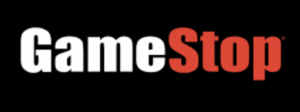 The democratization of capital may be messy at times, but it’s much better than the alternative. And it’s long over-due.
The democratization of capital may be messy at times, but it’s much better than the alternative. And it’s long over-due.
Robinhood’s actions to restrict trading in GameStop stock, as well as several other issuers, was completely the wrong response to an increasingly active capital class. It’s time to give up this old notion that small investors somehow need to be saved from themselves (as they claimed was the reason they halted trading in GME and other issues *). For years, capital investment has been the sole purview of the wealthy in the United States and elsewhere. We’ve long had a series of laws that restricted people’s abilities to invest in private stocks and at that same time, given fee structures and the general opaqueness of the public markets, it’s generally been the purview of only wealthy Americans. Both of those trends have started to change over the last handful of years – trends we should be encouraging not limiting.
The Jobs Act, passed in 2012, was a positive step in opening up private investment to more Americans. Title III of the JOBS Act (which was adopted in 2016) lets startups raise money from non-accredited investors. Previously, investors had to income (at least $200,000 a year over) and/or net worth (at least $1 million excluding your home) to be considered “accredited” and allowed to invest in any number of private assets. Title III allowed anyone to invest via equity crowdfunding. There are some challenges to Title III that still need to be addressed. For example, companies are limited to raising just over $1M million through this method, which limits the scope of businesses that can take advantage of capital formation in this manner. Additionally, there isn’t a mechanism for individuals to create “funds” under Title III to spread out their investment risk (they can only do so by investing project by project). Perhaps most importantly, there are significant per investor limits on their ability to participate in Title III Crowdfunding offerings that limit individual investor participation in crowdfunding marketplaces. But, opening up the ability to invest to a broader swath of Americans – democratizing capital – was a positive and long overdue step. At the same time on the retail side, platforms such as Robinhood have opened up public markets trading to more and more people eager to gain a foothold in the markets. To me, these trends are incredibly positive.
Capital ownership should be more broadly distributed. And while there need to be sensible regulations in place to prevent fraud, the notion that somehow people with less than a certain threshold of net worth can’t make intelligent investment decisions in the private markets is absurd. Robinhood restricting the trading of these stocks is just a continuation of old thinking. They’re a capitalist platform. They should believe in the capital markets and that, even if there are short term aberrations, ultimately the markets will figure it out. The fact that their actions helped stem a short squeeze that was hurting larger Wall Street traders and hedge funds exacerbates the perceptions that they’re not truly democratizing capital in the way that they have suggested that they are. Fred Wilson wrote a similar post earlier this week that I strongly agree with and would highly recommend reading as well. The solution to these sorts of aberrations in the market is to let the market play them out. In the long run, efficient markets will do exactly that (find the efficient price) and the long-term value of the stock will eventually trend back to its underlying and intrinsic value.
* It’s worth noting that while Robinhood claimed they stopped trading to “protect customers” the true reason was perhaps a bit more complicated. After admitting that there were some “regulatory issues” that prompted the trading halt, the company eventually revealed that the company itself lacked the liquidity (capital) required to allow trading to continue at the levels it was seeing. It subsequently put together a hasty $1bn financing.
Startup Communities | Rural Entrepreneurship
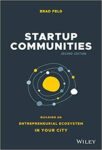 I’ve always loved Brad’s Startup Communities – it’s long been my favorite of his books, built upon ideas that are clearly stating the test of time. In it, he talks about the key ingredients to building a startup community and talks about our experience in Boulder – one of the first startup communities to really thrive outside of the traditional tech hotbeds of the coast (but certainly not the last). He’s recently come out with a new version of the book, as well as a companion book called The Startup Community Way. They are outstanding.
I’ve always loved Brad’s Startup Communities – it’s long been my favorite of his books, built upon ideas that are clearly stating the test of time. In it, he talks about the key ingredients to building a startup community and talks about our experience in Boulder – one of the first startup communities to really thrive outside of the traditional tech hotbeds of the coast (but certainly not the last). He’s recently come out with a new version of the book, as well as a companion book called The Startup Community Way. They are outstanding.Declaring Victory for The Finance Assistant Network
 Back in April, not long after COVID-19 hit, Lew Visscher from Lew’s List, Phil Vottiero from High Plains Advisors, and I launched the Covid-19 Finance Assistance Network (FAN) The network partnered volunteer CFOs with small businesses that were in need of financial guidance on carrying their business through the crisis and navigating the Federal programs from the CARES Act. Recognizing that smaller operations were at a huge disadvantage because they didn’t have access to the legal and financial resources that larger firms do, we wanted to do something to help them. Establishing FAN was a way to provide pro bono support to smaller businesses that were the most vulnerable to the shutdowns happening throughout the country.
Back in April, not long after COVID-19 hit, Lew Visscher from Lew’s List, Phil Vottiero from High Plains Advisors, and I launched the Covid-19 Finance Assistance Network (FAN) The network partnered volunteer CFOs with small businesses that were in need of financial guidance on carrying their business through the crisis and navigating the Federal programs from the CARES Act. Recognizing that smaller operations were at a huge disadvantage because they didn’t have access to the legal and financial resources that larger firms do, we wanted to do something to help them. Establishing FAN was a way to provide pro bono support to smaller businesses that were the most vulnerable to the shutdowns happening throughout the country.One Thing at a Time
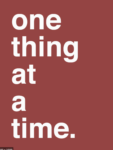 I’ve been doing a light mindfulness practice over the past month and a half through a portfolio company of Foundry’s called Meru Health. It’s been a great experience (my first time trying to do work like this on any consistent basis) and has taught me a number of things. Perhaps the most important has been the realization of how infrequently I do only one thing. I had no idea how infrequently I was able to focus on just a single thing. In fact I almost always have several things going on at the same time – I’m walking the dogs but also Voxing. I’m on a Zoom, but also replying to a quick text. I’m taking a shower, but also planning out my day. It’s insidious. And probably not all the healthy.
I’ve been doing a light mindfulness practice over the past month and a half through a portfolio company of Foundry’s called Meru Health. It’s been a great experience (my first time trying to do work like this on any consistent basis) and has taught me a number of things. Perhaps the most important has been the realization of how infrequently I do only one thing. I had no idea how infrequently I was able to focus on just a single thing. In fact I almost always have several things going on at the same time – I’m walking the dogs but also Voxing. I’m on a Zoom, but also replying to a quick text. I’m taking a shower, but also planning out my day. It’s insidious. And probably not all the healthy.
I know that everyone does this to some extent or another due to the culture we live in. There’s a high expectation to accomplish and produce, and many of us base our self-value or even our identity on our daily output. The mental sharpness and high productivity we attribute to being an effective multi-tasker can be sources of great personal pride.
There have been some really interesting studies (see here and here for examples) showing that, despite what we think, humans really aren’t good multi-taskers. We’re simply not very good at switching tasks quickly and moving efficiently from one thing to the next. As we switch our attention back and forth between multiple tasks, we’re not performing any one of them optimally and we’re much more effective at each function when we focus on it individually.
As I’ve gotten into this mindfulness practice, I’ve been amazed at how often my mind wanders away from what I’m trying to focus on. I’ve had to really stop myself and actually practice doing one thing at a time. But as I do this more and more and hold myself accountable to doing one thing at a time, it’s become easier for me to focus and I’m getting better at it. I think many of us, myself included, have trained our brains to shift constantly from topic to topic or task to task. I’m hoping that as I continue my practice, focusing on one thing at a time, and one thing only, will become more natural to me.
I thought it would be helpful to flag for you all as well.

